new posts in all blogs
Viewing: Blog Posts Tagged with: Carolrhoda Books, Most Recent at Top [Help]
Results 1 - 16 of 16
How to use this Page
You are viewing the most recent posts tagged with the words: Carolrhoda Books in the JacketFlap blog reader. What is a tag? Think of a tag as a keyword or category label. Tags can both help you find posts on JacketFlap.com as well as provide an easy way for you to "remember" and classify posts for later recall. Try adding a tag yourself by clicking "Add a tag" below a post's header. Scroll down through the list of Recent Posts in the left column and click on a post title that sounds interesting. You can view all posts from a specific blog by clicking the Blog name in the right column, or you can click a 'More Posts from this Blog' link in any individual post.

By:
Betsy Bird,
on 3/30/2016
Blog:
A Fuse #8 Production
(
Login to Add to MyJacketFlap)
JacketFlap tags:
Reviews,
Best Books,
Carolrhoda Books,
multicultural children's literature,
Vaunda Micheaux Nelson,
multicultural picture books,
Lerner Publishing Group,
Elizabeth Zunon,
African-American books,
Best Books of 2016,
2016 picture books,
2016 reviews,
Reviews 2016,
Add a tag
 Don’t Call Me Grandma
Don’t Call Me Grandma
By Vaunda Micheaux Nelson
Illustrated by Elizabeth Zunon
Carolrhoda Books (a division of Lerner)
$19.99
ISBN: 978-1-4677-4208-5
Ages 4-7
On shelves now.
In 2016 a picture book won a Newbery Award. Which is to say, a picture book was declared the best-written work for children between the ages of 0-14. After its win there was a fair amount of speculation about what precisely the Newbery committee was trying to say with their award. For that matter, there was a fair amount of speculation about what it meant for children’s literature in general. Are we, as a people, less tolerant of loquacious books? Considering the fact that a book with 592 pages was a runner-up, I think we’re doing just fine in terms of wordy titles. Just the same, I hope that if anything comes out of this surprise award it’s a newfound appreciation for the picture book’s art of restraint. A good picture book shows but doesn’t tell. Don’t believe me? Read the original manuscript of Sendak’s Where the Wild Things Are where he spells everything out for the reader. All these thoughts were in my head recently when I read the remarkable Don’t Call Me Grandma by Vaunda Micheaux Nelson. Tackling the almost nonexistent subcategory of grouchy great-grandparents, Ms. Nelson deftly encapsulates a woman’s personality and lifetime of experiences in a scant 32 pages.
“Great-grandmother Nell is scary.” You got that right, kid. She also does not hug, or kiss, or chase her great-grandchild for fun. Instead she sips an intoxicating beverage from a glass bedecked with a spider. She serves up fish for breakfast, buggy eyes and all. But she also has a vanity full of mysterious perfumes, lipstick as red as rubies, and memories as sharp and painful as the day they were made. And when her great-granddaughter sneaks a kiss, Nell is still scary. But that’s okay. “…I like her that way.”
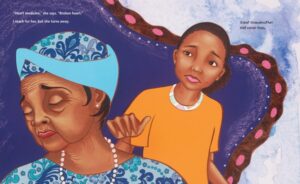 First and foremost, this is not a fuzzy grandparent (or great-grandparent) book. There are plenty of fuzzy books out there, filled to brimming with warm snuggly feelings. If that is the kind of book you require then grab yourself the nearest Nancy Tillman and content yourself accordingly. What we have here instead is a kind of character study. Whatever expectations you carry into this book, they will be upended by the text. Nell is an amazing character, one that I’ve never seen in book of this sort. Her prickly nature may well hide that “broken heart” she mentions obliquely, but it could just as easily hide more prickles. We get three distinct memories of her past, but it’s a single wordless two-page spread that probably says more about her than anything else. As an adult, I found myself speculating about her life. How perhaps she had dreams of dancing professionally but that she put those dreams aside when she had her children at a very young age. No kid is going to read into Nell what I have. That’s what makes reading this book so dynamic. Come for the prickly relative. Stay for the enticing, unknowable back story.
First and foremost, this is not a fuzzy grandparent (or great-grandparent) book. There are plenty of fuzzy books out there, filled to brimming with warm snuggly feelings. If that is the kind of book you require then grab yourself the nearest Nancy Tillman and content yourself accordingly. What we have here instead is a kind of character study. Whatever expectations you carry into this book, they will be upended by the text. Nell is an amazing character, one that I’ve never seen in book of this sort. Her prickly nature may well hide that “broken heart” she mentions obliquely, but it could just as easily hide more prickles. We get three distinct memories of her past, but it’s a single wordless two-page spread that probably says more about her than anything else. As an adult, I found myself speculating about her life. How perhaps she had dreams of dancing professionally but that she put those dreams aside when she had her children at a very young age. No kid is going to read into Nell what I have. That’s what makes reading this book so dynamic. Come for the prickly relative. Stay for the enticing, unknowable back story.
What I would really like to praise in this review, if nothing else, is just how deftly author Vaunda Micheaux Nelson parses words into sentences that swell with meaning. Take, for example, the moment when our heroine enters Great-Grandmother Nell’s bedroom. She considers playing with the cloth ballerina on the best but abstains, saying, “her expression makes me think she might tell.” Later she kisses her great-grandmother in her sleep. “Even asleep, Great-Grandmother Nell is scary. But I like her that way.” The very last line? “She won’t know”. It would be fascinating to see Nelson’s original manuscript. Was it just this sparse and spare? Or was it much longer and cut down to the bone in the editing process? Whichever it was, it works.
 The child in this book is much like the child who will be reading it with an adult. Both she and they sense that there is more at work here than meets the eye. And it is the art by Elizabeth Zunon that backs that feeling up. Elizabeth Zunon has been a force to reckon with for years. I first noticed her when she illustrated William Kamkwamba’s The Boy Who Harnessed the Wind, though I unknowingly had already been a fan of hers when she illustrated Jeanne Harvey’s My Hands Sing the Blues. In Don’t Call Me Grandma she begins with a straightforward contemporary story. Even then, her endpapers start telling the tale long before the words do (not counting the title). She fills these early pages with strings of pearls. Fat pearls, small pearls, pink and gray and white pearls. Note that in the text there is just one mention of those pearls, and it’s in the context of a lot of other things on Nell’s dressing table. But Zunon is getting a grip on her personality in her own way. Because of her we get a distinct sense of Great-Grandmother’s style, poise, and dignity. There are fun little details too, like the family peering out through the window as Nell gives a singing bird what for and how to. Zunon also lends Nell a humanity on the sidelines. When her great-granddaughter looks around her room we see Nell observing affectionately from the sides (though she’d be the first to deny it if you accosted her with the evidence). Then there are the memories. Depicted as splotchy watercolors, Zunon subtly changes her style to indicate how some memories are crystal clear even as they blur and go soft around the edges. The two-page spread of objects representing other memories (everything from photographs of Civil Rights marchers to tickets to an Alvin Ailey ballet) will require giving child readers some context. Nothing wrong with that. Sit them down and explain each thing you see. Don’t recognize something? Look it up!
The child in this book is much like the child who will be reading it with an adult. Both she and they sense that there is more at work here than meets the eye. And it is the art by Elizabeth Zunon that backs that feeling up. Elizabeth Zunon has been a force to reckon with for years. I first noticed her when she illustrated William Kamkwamba’s The Boy Who Harnessed the Wind, though I unknowingly had already been a fan of hers when she illustrated Jeanne Harvey’s My Hands Sing the Blues. In Don’t Call Me Grandma she begins with a straightforward contemporary story. Even then, her endpapers start telling the tale long before the words do (not counting the title). She fills these early pages with strings of pearls. Fat pearls, small pearls, pink and gray and white pearls. Note that in the text there is just one mention of those pearls, and it’s in the context of a lot of other things on Nell’s dressing table. But Zunon is getting a grip on her personality in her own way. Because of her we get a distinct sense of Great-Grandmother’s style, poise, and dignity. There are fun little details too, like the family peering out through the window as Nell gives a singing bird what for and how to. Zunon also lends Nell a humanity on the sidelines. When her great-granddaughter looks around her room we see Nell observing affectionately from the sides (though she’d be the first to deny it if you accosted her with the evidence). Then there are the memories. Depicted as splotchy watercolors, Zunon subtly changes her style to indicate how some memories are crystal clear even as they blur and go soft around the edges. The two-page spread of objects representing other memories (everything from photographs of Civil Rights marchers to tickets to an Alvin Ailey ballet) will require giving child readers some context. Nothing wrong with that. Sit them down and explain each thing you see. Don’t recognize something? Look it up!
A woman of my acquaintance used to make a big show of objecting to any and all picture books that depicted grandmothers as white-haired, doddering old women, tottering on the very edge of the grave. To her mind, there should be at least as many books that show those women as resourceful, spry, and full of energy. Great-Grandmothers probably have few books where they’re wrecking havoc with the universe. Generally speaking they just dodder and die. There will be no doddering and certainly no dying in Don’t Call Me Grandma, though. Nell isn’t just a character. She comes off the page like a full-blown human being, warts and all (just an expression – Nell would take me to the cleaners if she heard me indicating she has any warts). Sharp and smart, this is one of those picture books I’d like to see more of. Which is to say, stories I’ve never seen before.
On shelves now.
Source: Final copy sent from publisher for review.
Like This? Then Try:
Professional Reviews:

By:
Sue Morris @ KidLitReviews,
on 3/4/2016
Blog:
Kid Lit Reviews
(
Login to Add to MyJacketFlap)
JacketFlap tags:
Middle Grade,
outdoors,
trust,
survival,
books for boys,
camping,
Carolrhoda Books,
integrity,
Morse Code,
Elizabeth Atkinson,
Lerner Publishing Group,
Library Donated Books,
6-Stars TOP BOOK,
Top 10 of 2016,
The Island of Beyond,
relationships,
Add a tag
My calendar said today is World Read Aloud Day. As you can see, it’s wrong. This took place on February 24th. Not sure how I messed this up, but really, can’t any day be a good day to read aloud? If you know a middle grader who is unable to read, even if only for today, …
By:
Sue Morris @ KidLitReviews,
on 11/29/2015
Blog:
Kid Lit Reviews
(
Login to Add to MyJacketFlap)
JacketFlap tags:
Children's Books,
holidays,
Picture Book,
Poetry,
Santa,
Christmas,
Favorites,
Bob Raczka,
North Pole,
Carolrhoda Books,
Holiday Book,
Haikus,
Lerner Publishing Group,
5stars,
Chuck Groenink,
Library Donated Books,
Santa Clauses: Short Poems from the North Pole,
Add a tag
Last year, I was hospitalized from September until March and was unable to bring you this wonderful Christmas book from Bob Raczka and Chuck Groenink (Carolrhoda). I love this picture book and its illustrations of life at the North Pole–the simplified, down-to-earth version–and Santa’s poems, one haiku for each day, from December 1st to 24th. I am …
By:
Sue Morris @ KidLitReviews,
on 9/30/2015
Blog:
Kid Lit Reviews
(
Login to Add to MyJacketFlap)
JacketFlap tags:
Dino-Boarding,
dino sports books,
surfboarding,
Children's Books,
Picture Book,
sports,
humor,
Series,
dinosaurs,
Books for Boys,
skateboarding,
Lisa Wheeler,
snowboarding,
Carolrhoda Books,
Barry Gott,
4stars,
Library Donated Books,
Add a tag
Dino-Boarding Written by Lisa Wheeler Illustrated by Barry Gott Carolrhoda Books 9/01/2014 978-1-4677-0213-3 32 pages Age 4—8 A Junior Library Guild Selection “Team Green Machine battles the Shredding Crew for dino-boarding domination! Allo and Diplo thrill the surfing crowd, while Compy comes up short on a short board. …
By:
Guest Posts,
on 4/30/2015
Blog:
The Children's Book Review
(
Login to Add to MyJacketFlap)
JacketFlap tags:
Historical Fiction,
Chapter Books,
Chronicle Books,
featured,
Books for Girls,
Carolrhoda Books,
Philomel Books,
Andrea Cremer,
April Lindner,
Michaela MacColl,
G.P. Putnam's Sons Books for Young Readers,
Teens: Young Adults,
A.C. Gaughen,
Bloomsbury USA Books,
Stacey Lee,
Ashley Perez,
Poppy Books,
Add a tag
Young Adult novel writers are putting their spin on historical fiction, covering historical mysteries, contemporary historical reinterpretations, steampunk, historical romances, and more.
Alix Reid, the new editorial director of Carolrhoda Books and Carolrhoda Lab, is back on the blog to answer more questions, this time talking about her favorite books, hobbies, and what she'd be if she wasn't an editor. (In case you missed it, you can find the first round of Q&A here.)
1. What were your favorite books as a kid? What are some favorite books you’ve read recently?
I was (and still am) an avid re-reader and some of the books that I read over and over again as a kid included Andrew Lang’s Fairy Books,
A Wrinkle in Time by Madeliene L’Engle,
The Witch of Blackbird Pond by Elizabeth George Speare,
Homecoming by Cynthia Voight, and
The Wolves of Willoughby Chase by Joan Aitken. And, of course, the Anne of Green Gables and Little House books.
I have so many recent favorites!
Bone Gap by Laura Ruby,
Clariel by Garth Nix,
The Ask and the Answer by Patrick Ness (I came late to this amazing series),
The Kingdom of Little Wounds by Susann Cokal, and Ricky Yancy’s Monstrumologist series. My favorite adult book right now is Kate Atkinson’s
Life After Life. As I’ve grown older, as might be clear from this list, I’ve been gravitating toward science fiction and fantasy.
2. Say you’re trapped on a desert island—what 5 books would you want with you?
I’ve never read
The Inferno, though I’ve started it about fifteen times, so this would be a great opportunity to finally settle down with it.
Jane Eyre would definitely be on my list; I read it about once a year. Maybe the Complete Oxford English Dictionary; that probably sounds pretentious, but in graduate school I studied Anglo-Saxon and Italian, as well as Chaucer, and I love seeing how languages evolve over time and cross over into each other. I think I’d have to put Cynthia Voight’s
Homecoming on the list, because it is one of the most beautiful and satisfying books of all time. For my last book, I might pick The Dark Tower series by Stephen King, but I’m not entirely sure about that.
3. Tell us about Chicago. What draws you to the city?
I never thought I’d leave Manhattan, where I grew up, but when my husband got a job in Chicago he couldn’t turn down, and we were in the process of adopting our wonderful daughter, it was an opportunity we had to take. I love the friendliness of the city—strangers actually say hello to each other, which took some getting used to. The lake is beautiful, and the sculptures and architecture are breathtaking. Although we live in Oak Park now (home to Frank Lloyd Wright’s studio and replete with original Wright houses), we love going into the city to visit the museums and try out the many new restaurants.
4. If you weren’t an editor, you’d be a…
When I went to graduate school, I was planning to become a professor of English literature. I did teach some graduate level courses in creative writing and the history of publishing, but found I really didn’t enjoy the experience as much as I’d expected. However, I’ve been working one-on-one with second graders in my daughter’s class, helping them write stories and edit them, so I could see tutoring children as an alternative career. But I love being an editor, so it’s hard to imagine doing anything else!
5. Speaking of things other than editing, what are your hobbies?
Spending time with my daughter and husband, of course. I also have a big, energetic golden retriever who loves long walks. I enjoy knitting scarves, although I’m running out of people to give them to, and I’ve recently started doing barre classes. And I like to obsess about the Game of Thrones TV series.
 |
| Hoss, Alix's golden retriever: "He's a goofball." |
Thanks, Alix!

We'd like to introduce the new Carolrhoda Books and Carolrhoda Lab editorial director, Alix Reid! She officially started last week and was kind enough to agree to answer some questions for us. We're posting part 1 (about her editing experience and background) today; part two (about her favorite books, hobbies, and life in Chicago) will go up next week.

1. First, give us a bio!
From the moment I could read, I always had my head in a book, and imagined I would be the next E. B. White or E. L. Konigsburg. But after earning an undergraduate degree in English Literature from Williams College, I started working as a children’s book editor at Harper & Row (now HarperCollins) and realized this was my true calling. I began my career as an editorial assistant, and during fourteen years at Harper worked my way up to become editorial director and vice president. I’ve also earned graduate degrees from Michigan and Harvard, and worked as a freelance children’s book editor while raising my daughter in Chicago.
2. How did you get into editing?
After I graduated, I opened up the newspaper to look for a job in editing. There were dozens of jobs but my eye immediately gravitated to the editorial assistant job at Harper. Through my late teens and twenties, my secret passion was to read middle grade and young adult novels, and I couldn’t believe there was actually a job where I could edit these books! I thought I bombed the interview—I was so nervous I had to take the typing test twice—but I must have done something right, since I was offered the job the next day. I started working first for the legendary Marilyn Kriney, and then for Kate Morgan Jackson, who has been the editor-in-chief for over a decade.
3. Name some notable books that you’ve edited.
My very first acquisition was Gail Carson Levine’s Ella Enchanted. I loved the novel from the first, and remember running into Kate’s office saying we had to acquire the book right away. It went on to win the Newbery Honor and remains one of my favorite books of all time. I also edited Louise Rennison’s hilarious Angus, Thongs, and Full-Frontal Snogging series about the irrepressible Georgia Nicolson; the first book in the series won a Michael Printz Honor Award. That said, there are so many books I worked on that hold a special place in my heart: Julianna Baggott’s The Anybodies (written under the name N. E. Bode), Cynthia Rylant’s God Went to Beauty School, and A. M. Jenkins’s Out of Order and Damage. What I love about all the books I’ve edited is not only that they’re wonderfully written, but that they feel fresh and different, and have something important to say to their audience.
4. What have been some of your favorite projects?
During my tenure at HarperCollins, I took on the role of director of foreign acquisitions. This meant I got to read the wonderful books being published in the UK (and elsewhere, but mostly the UK) and introduce them to a US audience. It was so exciting to meet my UK counterparts and I’m particularly proud of having acquired the Molly Moon series by Georgia Byng and The Chronicles of Ancient Darkness series by Michelle Paver.
5. What else would you like Carolrhoda Books and Carolrhoda Lab readers to know?
One of the things I’m so excited about in joining the Carolrhoda team is their commitment to publishing only the best books. They keep their list small and no book is considered “mid-list.” Each author is nurtured not only by his or her editor, but also by the design team, the publicity and marketing team, our foreign rights director—essentially, the whole company helps publish each book. In addition, Carolrhoda Books and Carolrhoda Lab have embraced working with new authors and publishing books that break boundaries—no topic is off limits. This philosophy speaks deeply to me, and I look forward to growing the list and staying true to its mission.

By:
Sue Morris,
on 6/23/2014
Blog:
Kid Lit Reviews
(
Login to Add to MyJacketFlap)
JacketFlap tags:
Children's Books,
Picture Book,
freedom,
NonFiction,
Historical Fiction,
Favorites,
slavery,
children's book reviews,
Gretchen Woelfle,
Carolrhoda Books,
Declaration of Independence,
Lerner Publishing Group,
1776,
Alix Delinois,
American Revolutionary War,
Library Donated Books,
6 Stars TOP BOOK,
Top 10 of 2014,
Massachusetts Constitution of 1780,
Add a tag
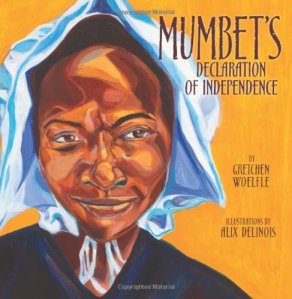 .
.
Mumbet’s Declaration of Independence 
by Gretchen Woelfle & Alix Delinois, illustrator
Carolrhoda Books 2/01/2014
978-0-7613-6589-1
Age 7 to 9 32 pages
.
“All men are born free and equal.” Everybody knows about the Founding Fathers and the Declaration of Independence in 1776. But the founders weren’t the only ones who believed that everyone had a right to freedom. Mumbet, a Massachusetts slave believed it too. She longed o be free, but how? Would anyone help her in her fight for freedom? Could she win against her owner, the richest man in town? Mumbet was determined to try. Mumbet’s Declaration of Independence tells her story for the first time in a picture book biography, and her brave actions set a milestone on the road toward ending slavery in the United States.”
Opening
“Mumbet didn’t have a last name because she was a slave. She didn’t even have an official first name. Folks called her Bett or Betty. Children called her Mom Bett or Mumbet. Others weren’t so kind.”
The Story
The year is 1776 and the United States begins its fight for freedom from the rule of the British by declaring on paper their Declaration of Independence. Mumbet is a slave owned by the richest man in town—the one who is usually the most powerful in town. Colonel John Ashley lived in Massachusetts and owed many businesses. He might have been kind, but his wife was definitely a cruel woman when it came to her husband’s slaves. Mumbet worked for Mrs. Ashley, usually in her kitchen. Mumbet hated that another human owned her, as wouldn’t you or I. She knew servants and hired hands could leave a cruel employer, but Mumbet had no recourse—she’s is property.
As the founding fathers gathered to write the Declaration of Independence, which started the seven-year war against the British, Mumbet served refreshments and tried to listen. The men were against British taxes and feared losing all their rights under British rule. As Mumbet listened, she heard one man say,
“He [the King of England] would make us slaves.”
And,
“Mankind in a state of Nature are equal, free, and independent . . .
God and Nature have made us free.”
After seven years of war against England, and freedom won, the town held a meeting to introduce The Massachusetts Constitution in 1780. It declared,
“All men are born free and equal.”
Mumbet wondered if that meant her. She approached Theodore Sedgwick, a young lawyer who helped draft the Declaration of Independence, and asked him to represent her in a fight for her personal freedom under the new Massachusetts law. He accepted. Mr. Sedgwick reminded the judge and jury that no law existed in Massachusetts making slaves legal and the new constitution now made them illegal. Would the judge and jury agree with Mr. Sedgwick and grant Mumbet her freedom—and the freedom of all slaves in Massachusetts in the process?
Review
Mumbet’s story, a true story, is an unusual biography in that I don’t recall hearing about this woman in any history class, not even American History. Mumbet had strength unseen except on rare occasions. To take your master to court to demand your freedom was a crazy idea. Even white women were still considered their husband’s chattel, why would a slave be above that. How was Mumbet going to convince a jury—not of her peers—and a judge—most likely friends with the richest man in town—that she deserved her freedoms for the same reason as the men deserved theirs from Britain? The new Massachusetts Constitution was not that old and here is this slave trying to gain her freedom, yet she is property. This must have caused some laughter, smirking, and hate. I find this story truly moving. Her new name became Elizabeth Freeman, a most deserved last name.
Mumbet’s clear and succinctly written story tells of an amazing, intelligent, and courageous woman who dared stand up for her rights when no one ever considered her to have rights. She entered a paternal courtroom, a jury not of her peers, and a town overflowing with curious citizens not all of which could have been happy Mumbet wanted freedom. It was probably more hostile, considering ever man probably stood to lose his slaves if Mumbet were successful. That makes Mumbet one of the strongest woman to have ever lived in the United States.
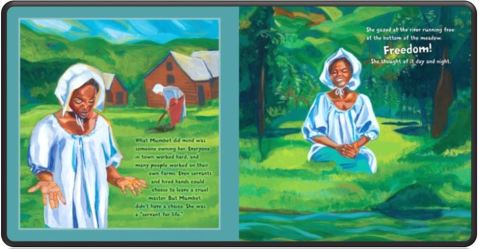
The illustrations are profoundly beautiful with deep rich colors. Even the end pages have an elegance to them. Alix Delinois represented that time in America accurately, with facial expressions that must have matched the frustration felt by most citizens, as the founding fathers wrote the Declaration of Independence. Mrs. Ashley’s cruelty is shockingly visible, immediately making you feel empathy for Mumbet and her daughter. For people sincerely wanting freedom and respect from the British, some were capable of much harm to others.
Thankfully, someone thought to write down Mumbet’s story giving the author great accounts of Mumbet’s life and challenges before, during, and after that day in court. After the story are two pages of author notes. They tell of the help the author received from Catharine Maria Sedgwick, Theodore Sedgwick’s daughter. Catharine wrote Mumbet’s story as it happened, leaving accurate historical documents from which this story was written. These notes are fascinating.Teachers would do well to keep Mumbet’s Declaration of Independence as an adjunct history lesson. It is a story not told in most history classes. Gretchen Woelfle’s impeccable research and storytelling skills gives us a story of slavery not well known in the very country in which it happened—until now. Mumbet’s Declaration of Independence should fascinate kids and adults alike.
MUMBET’S DECLARATION OF INDEPENDENCE. Text copyright © 2014 by Gretchen Woelfle. Illustrations copyright © 2014 by Alix Delinois. Reproduced by permission of the publisher, Carolrhoda Books, Minneapolis, MN.
Buy a copy of Mumbet’s Declaration of Independence at Amazon —B&N—iTunes—Book Depository—Carolrhoda Books—at your local bookstore.
—B&N—iTunes—Book Depository—Carolrhoda Books—at your local bookstore.
.
Learn more about Mumbet’s Declaration of Independence HERE.
Meet the author, Gretchen Woelfle, at her website: http://www.gretchenwoelfle.com/
Meet the illustrator, Alix Delinois, at his website: http://alixdelinois.com/home.html
Find more books a the Carolrhoda Books blog: http://carolrhoda.blogspot.com/
Carolrhoda Books is a division of Lerner Publishing Group, Inc. https://www.lernerbooks.com/
.
Also by Gretchen Woelfle
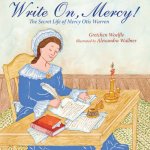
Write On, Mercy!: The Secret Life of Mercy Otis Warren

All the World’s a Stage: A Novel in Five Acts
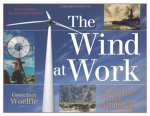
The Wind at Work: An Activity Guide to Windmills
Also by Alix Delinois
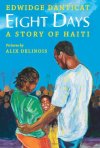
Eight Days: A Story of Haiti
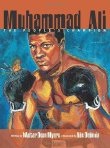
Muhammad Ali: The People’s Champion
.
.

Filed under:
6 Stars TOP BOOK,
Children's Books,
Favorites,
Historical Fiction,
Library Donated Books,
NonFiction,
Picture Book,
Top 10 of 2014 Tagged:
1776,
Alix Delinois,
American Revolutionary War,
Carolrhoda Books,
children's book reviews,
Declaration of Independence,
freedom,
Gretchen Woelfle,
Lerner Publishing Group,
Massachusetts Constitution of 1780,
slavery 







By:
Sue Morris,
on 6/4/2014
Blog:
Kid Lit Reviews
(
Login to Add to MyJacketFlap)
JacketFlap tags:
bottoms,
Deborah Aronson,
Ivica Stevanovic,
tushes,
Children's Books,
Picture Book,
children's book reviews,
Debut Author,
Carolrhoda Books,
Lerner Publishing Group,
4stars,
Library Donated Books,
butts,
Add a tag
 Where’s My Tushy?
Where’s My Tushy? 
by Deborah Aronson & Ivica Stevanovic, illustrator
Carolrhoda Books 1/05/2014
978-1-4677-1197-5
Age 4 to 8 32 pages
.
“In one little town (it is sad but it’s true), the tushies left town without leaving a clue. What happens when all the tushies in an unusual town decide to take a vacation?”
Opening
“We all have a tush and we’re glad that we’ve got ‘em. Our lives would be rough with no tush or no bottom. If our tushies decided to get up and leave, we’d find it alarming and hard to believe”
Review
In an odd little English town, on a nice night, all the tushies decided they deserved a holiday from their tough, stressful lives. The townsfolk awoke shocked to have lost their tushie. They tried to go about their normal day, yet nothing held up their pants. Oh, they all tried. Some stuffed their vacant bottom with socks or pillows, while others used rope or suspenders. It was a sorry sight.
Now, stop laughing! These people couldn’t sit down without their tushie. Standing made their feet tired—would they too walk away? Some cried out for their tushie to return, but the earless, triangular tushies went south, to lounge around on the beach and soak up the sun. Detectives tried detecting. People hung posters. Police took reports. A dog and cat—with tushies—stared at a poster, alarmed at the sight of the smiling tush.
Without the pressure and stress normally felt, the tushies enjoyed each carefree day . . . until, like most on holiday, they begin missing home and their jobs—okay, not quite like most. One day, a young redheaded girl tripped on a lump of grass and fortuitously fell down on her rump. She was thrilled for her tush was once again behind her. One by one, the tushies returned to their bottoms, promising never to abandon their person again.
Loaded with laughs and guffaws, Where’s My Tushie will delight kids. Tushes young and old leave town wearing nothing but undies. They have faces complete with eyes, nose, mouth, and a crack that gives them two horizontal chins. They sprout feet and hands. One must suspend their beliefs to enjoy the story. Easily done. The story, told in rhyme, are made of fantastic couplets—some quatrains—that are fun to read aloud because Ms. Aronson never misses a beat.
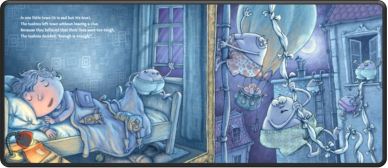
The illustrations are nicely done. I love the alarmed looks when all realize they have no tush. For one little boy, a dotted line outlines where his bottom should have been. I love all the detail and the little surprises in some of the spreads. Most have a tush or two looking on, smiling at the make shift behinds, as if enjoying the chaos they have caused. Two detectives, one with a magnifying glass, totally miss the double decker bus with a roof full of tushies. Sightseers, I’m sure.
Depending on a child’s age and gullibility, this inventive story will have kids checking for tushies, at least for a while. I am wondering where the tushies’ arms and legs went now that they have returned to being behinds. Do they fall off and regenerate when needed? I’m just as quizzical about the eyes, mouth, and nose. If the nose remains on the tush, eventually the promise never to leave will be broken. No doubt, kids will have thoughts such as those, and anyone who gets a solid answer, please let me know.
Teachers—inventive teachers—might find a use for Where’s My Tushie in the classroom. Young American kids will have questions about more than tushies. The illustrations are definitely English with a red double-decker and Sherlock Holmes like detectives, among other things. Don’t miss the hungry shark ready to eat a swimming tush. He possesses the crazed look seen in villainous cartoons.
WHERE’S MY TUSHIE. Text copyright © 2014 by Deborah Aronson. Illustrations copyright © 2014 by Ivica Stevanovic. Reproduced by permission of the publisher, Carolrhoda Books, Minneapolis, MN.
Buy Where’s My Tushie at Amazon —B&N—Lerner Books—your local bookstore.
—B&N—Lerner Books—your local bookstore.
Learn more about Where’s My Tushie HERE.
Meet the author, Deborah Aronson, at her bio: http://www.hermanagencyinc.com/deborah_aronson.htm
Meet the illustrator, Ivica Stevanovic, at her website: http://ivicastevanovicart.blogspot.com/
Meet Carolrhoda Books, an imprint of Lerner Publishing Group, at the company blog:
Also by Ivica Stevanovic
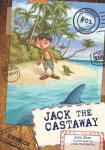
Jack the Castaway (The Berenson Schemes)
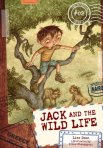
Jack and the Wild Life (Berenson Schemes)
.
.
Will be reviewing these soon!

Filed under:
4stars,
Children's Books,
Debut Author,
Library Donated Books,
Picture Book Tagged:
bottoms,
butts,
Carolrhoda Books,
children's book reviews,
Deborah Aronson,
Ivica Stevanovic,
Lerner Publishing Group,
tushes 







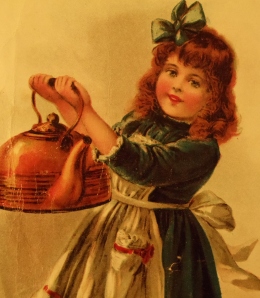
“Look! I’m carrying a kettle of scalding water.”
What’s with the face? You don’t like honesty? It’s not completely accurate to say I don’t like kids, because I do–on a child-by-child basis. But the species in general? Not so much.
And in case you’re wondering, yes I have two children of my own. Do I love them? With all my heart. Do I want to be surrounded by a battery of wee nose miners on a daily basis? Oh, my. NO.
I knew it. “The face” is back. You’re wondering why I want to write children’s books when I’m not a super fan of kids. Let me explain how I reconcile the apparent disconnect–at least as I understand so far.
Not too long ago I met Andrew Karre, the editorial director for Carolrhoda Books, at a retreat for children’s writers. He told us he believes children’s literature is about children, and not written for children. What’s the distinction? Motivation. Rather than being audience-centric and focusing on pleasing the reader, Karre suggests the drive to create children’s literature needs to focus inward. Intriguing perspective, isn’t it? I had to noodle over it for quite a while, but I think he’s right.
From the time I recognized myself as a writer an ice age ago, I knew I wanted to write children’s books. Isn’t that odd? So specific. So narrow. Children’s literature has an innate openness, optimism, humor, bravery and tenderness that makes it irresistible to me, as a reader and a writer. Those are the qualities I want funneling through my brain, my heart and my imagination. Writing about children allows me to experience that. I am so lucky. Knowing a child may enjoy what I love to write is a spectacular bonus.
What about you? Why does children’s literature call to you?
(And by the way, if you like kids, it’s okay. I still accept you.)
A children’s story that can only be enjoyed by children is not a good children’s story in the slightest.
~ C.S. Lewis


 Lerner Publishing Group’s Carolrhoda Books occasionally accepts unagented submissions. According to editorial director Andrew Karre, the publisher will take young-adult manuscripts from October 1st until October 31st.
Lerner Publishing Group’s Carolrhoda Books occasionally accepts unagented submissions. According to editorial director Andrew Karre, the publisher will take young-adult manuscripts from October 1st until October 31st.
Follow this link to read all the details and Karre’s instructions. Karre added that he does not like university-aged protagonists, manuscripts that exceeds 100,000 words or books that “have series potential.” He prefers projects that feature unusual people, unfamiliar mythologies and doomed romance.
Karre included three tips for authors: “Things I require: That you follow my submission guidelines. That your cover letter be very brief and you not agonize over it for more than twenty minutes. Your extreme patience. I’m slow. I often return to manuscripts several times before I make a decision.”
New Career Opportunities Daily: The best jobs in media.
 The Many Faces of George Washington: Remaking a Presidential Icon
The Many Faces of George Washington: Remaking a Presidential Icon
By Carla Killough McClafferty
Carolrhoda Books (a division of Lerner)
$20.95
ISBN: 978-0-7613-5608-0
Ages 10 and up
On shelves April 1st
Forensic anthropology meets the guy on the one dollar bill. That’s one way of putting it anyway. Walk into many a classroom and tell the kids “Look! I’ve a book here on George Washington! Who wants it?” and prepare to be buried in groans. An alternative take: Walk into many a classroom and show the kids pages 8 and 9 of Carla Killough McClafferty’s The Many Faces of George Washington. There they will see an array of Washington portraits so diverse that you might as well be looking at five different men. Now ask the kids, “How do you figure out what a dead person really looked like?” The cannier amongst them might reply that you need only locate the person’s skull and a forensic artist. Nod sagely. Then ask, “And what if you don’t have a skull to work from?” That right there is the premise behind McClafferty’s newest, and it’s a fascinating point of discussion. The question is, can you reproduce a man as he was at three different points in his life without photographs or bones? The result is one of the more enjoyable points of nonfiction out this season. One of the more creative too.
Recently The Mount Vernon Ladies’ Association had a problem. Thirty years ago your average American knew more about President George Washington than folks today. What to do? In an interesting twist, the Association placed much of the blame on the image of George found on the dollar bill. I mean seriously, who can relate to that guy? It would be great if you could find a way to discover what the man actually looked like. So Jeffrey H. Schwartz, a forensic anthropologist from the University of Pittsburgh, and a whole team of experts were brought in to try to create life-sized reproductions of Washington at ages nineteen (young surveyor), forty-five (General), and fifty-seven (President). As we watch the reconstruction of a man long dead, the text is interspersed with information about Washington at each of these ages, telling the story of the man as well as the body. A Timeline, Source Notes, Index, Bibliography, and section for Further Reading (including websites) are all included at the end.
 The book packs a two-fisted whammy of a punch. For the history buffs you’ve the history of Washington himself. But for the forensic scientists (a.k.a. C.S.I. fans) you’ve the fascinating story of how a person goes about reconstructing someone’s body without having something as essential as a skeleton to work with. The solutions found here (getting measurements from death masks, clothing, eye-witness accounts, locks of hair, etc.) are as inventive as they are fascinating. One cannot help but marvel at the meticulousness of the professionals at work. Their attention to detail is so precise that you find yourself poring over details that explain the red lines in Washington’s eyeballs or how they recreated his horse. Best of all, McClafferty avoids a problem I&rsqu
The book packs a two-fisted whammy of a punch. For the history buffs you’ve the history of Washington himself. But for the forensic scientists (a.k.a. C.S.I. fans) you’ve the fascinating story of how a person goes about reconstructing someone’s body without having something as essential as a skeleton to work with. The solutions found here (getting measurements from death masks, clothing, eye-witness accounts, locks of hair, etc.) are as inventive as they are fascinating. One cannot help but marvel at the meticulousness of the professionals at work. Their attention to detail is so precise that you find yourself poring over details that explain the red lines in Washington’s eyeballs or how they recreated his horse. Best of all, McClafferty avoids a problem I&rsqu

By: Brimful Curiosities,
on 1/29/2011
Blog:
Brimful Curiosities
(
Login to Add to MyJacketFlap)
JacketFlap tags:
Carolrhoda Books,
Lerner Publishing,
Book crafts,
Food,
Holidays,
Book Review,
Picture Books,
2006,
Vehicles,
Valentine's Day,
Add a tag
While looking for cute Valentine's Day ideas I came across directions for a candy airplane valentine on the Family Fun website. I remember making similar airplanes when I was a kid and, if my memory serves me correctly, I believe that I first learned to make them in Girl Scouts.

The candy airplanes are made out of a roll of Smarties, a couple sticks of gum, and two Life-Saver candies for the wheels. A rubber band holds all the pieces of candy together to form an airplane. (Visit Family Fun for instructions on how to assemble.)
 I created and printed a special heart Valentine themed gum wrapper cover like the one shown on the Family Fun site to add to our airplanes (click on the image to see the jpg and print). I think the decorated wrapper helps the airplane look prettier for Valentine's Day. The airplane is a little tricky to assemble and is probably a project suited more for older kids, but my kids enjoyed watching me make them and they really, really had a blast playing with them! I think I'll make a few more so my son can give them to his friends for Valentine's Day.
I created and printed a special heart Valentine themed gum wrapper cover like the one shown on the Family Fun site to add to our airplanes (click on the image to see the jpg and print). I think the decorated wrapper helps the airplane look prettier for Valentine's Day. The airplane is a little tricky to assemble and is probably a project suited more for older kids, but my kids enjoyed watching me make them and they really, really had a blast playing with them! I think I'll make a few more so my son can give them to his friends for Valentine's Day.
Some of the variations of this craft show it with a little message on a banner attached to the back of the plane. Here are a few cute Valentine airplane themed sayings:
It's plane to see - I want you for my Valentine.
Up, up and away! Happy Valentine's Day!
Above all, I want you for My Valentine.
You're just plane cool!
Have a high flying Valentine's Day!
Love is in the air!
Valentine, my heart soars for you!
♥ ♥ ♥ ♥ ♥ ♥ ♥ ♥ ♥ ♥ ♥ ♥ ♥ ♥ ♥ ♥ ♥ ♥ ♥ ♥ ♥ ♥ ♥ ♥ ♥ ♥ ♥ ♥We started reading several Valentine's Day books last week. One of my daughter's favorite books from library included an illustration of the main character in an airplane spreading Valentine cheer. How fun is that?
 Love, Ruby Valentine
Love, Ruby Valentine
 The Bookanistas are back for 2011 - some great books are coming so stay tuned every Thursday for scoop.
The Bookanistas are back for 2011 - some great books are coming so stay tuned every Thursday for scoop.
I was sent this eArc a awhile back.
And, I LOVE a good survival story. Especially for kids.
Lost in the River of Grass by Ginny Rorby is a great book. It is scheduled to be released by Carolrhoda Books (Andrew Karre's imprint) in March 2011.
A science-class field trip to the Everglades is supposed to be fun, but Sarah's new at Glades Academy, and her fellow freshmen aren't exactly making her feel welcome. When an opportunity for an unauthorized side trip on an airboat presents itself, it seems like a perfect escape--an afternoon without feeling like a sore thumb. But one simple oversight turns a joyride into a race for survival across the river of grass. Sarah will have to count on her instincts--and a guy she barely knows--if they have any hope of making it back alive.
I loved the survival aspect. YA for "City mouse visits Country mouse". City girl goes to everglades, gets lost, and meets local boy who helps her find her way out. All while learning what is important.
This book touched on my biggest fears: snakes, gators, being lost, and  surviving in the wild with no hair gel or chocolate. The Everglades scare me so this was a way to go there without getting my feet wet :)
surviving in the wild with no hair gel or chocolate. The Everglades scare me so this was a way to go there without getting my feet wet :)
You thought navigating high school was hard? Wait until you enter the Everglades.
I think it's a great book for boys and girls.
Add it to your list.
Check out these other Bookanista reviews:
Michelle Hodkin gushes about The Near Witch
 Monkey with a Tool Belt by Chris Monroe
Monkey with a Tool Belt by Chris Monroe
Reading level: Ages 4-8
Library Binding: 32 pages
Publisher: Carolrhoda Books (December 15, 2007)
Language: English
ISBN-10: 0822576317
ISBN-13: 978-0822576310
Source of book: Review copy from publisher
Chico Bon Bon is a monkey who owns a tool belt full of tools—from the conventional screwdriver and drill to the not-so-conventional donkey wrench, zoozle, and snozz remover. On any given day, Chico Bon Bon will use these tools to build and fix things for his friends and family. He is extremely creative as is evidenced by the clock he builds for ducks and the small roller coaster for local chipmunks.
One day, a devious organ grinder looking for a new circus monkey lures Chico Bon Bon into a trap and takes him back to the circus camp. Luckily, Chico Bon Bon has his trusty tool belt with him and devises a plan to escape—the execution of this plan will leave children laughing and cheering for Chico.
While the story and text are very funny, it's Monroe's hilarious and highly detailed illustrations that will keep kids coming back to the book. The most elaborate illustration is that of the organ grinder taking Chico Bon Bon through the town to the circus camp. We see him traveling through the town on a winding road, passing by a pond, a smoothie hut, a park, a bookstore, and more. Each time I look at this page, I see something new.
I gave a copy to my friend Chris who has two daughters, ages 6 and 3, and he says it's quickly become a favorite in their house. If you're looking for a funny book that will keep kids asking for you to read it to them, Monkey with a Tool Belt makes a perfect choice. I sincerely hope this isn't the last we see of Chico Bon Bon.
What other bloggers are saying:
A Fuse #8 Production: "Monkeys are funny. Tool belts are not funny. So how do we account for the fact that monkeys plus tool belts are very funny? I've no idea, but if Chris Monroe keeps churning out more picture books of this style and flavor, I'll be a happy woman. Definitely a keeper for the tool belt and monkey lovers of the world."
Jen Robinson's Book Page: "Really, I think that everyone who has young children should go out and get a copy of this book. I might see if I can buy it in bulk, for all of my gift-giving needs. Monkey with a Tool Belt has my highest recommendation."
Zion School Library: "After reading Monkey with a Tool Belt aloud to 1st graders, they gave the book the highest praise by asking 'Is there another 'Monkey' book? If there isn't there should be!'"
Three Silly Chicks: "Monkey with a Tool Belt is a book kids will enjoy mightily. It's all that and a banana hammer!"
(And if you’ve never heard that term…)
The Big O’s long-awaited report on “sharing, privacy and trust” begins by pointing out that lots of people use the Web, and adds (the far more interesting point) that people increasingly build the Web. “We have moved from an Internet built by a few thousand authors to one constructed by millions.” By the last chapter, the report has delicately but firmly drawn sharp distinctions between users at large and a category they examined up close and personal: “library directors.” It’s a valuable, useful report — though useful in more ways than OCLC may have anticipated.
Key take-aways: the report stops just short of pointing out what a lot of us muse over privately and publicly, which is that traditional values about user privacy hold us back from a level of personalized service people increasingly expect.
“Library directors” use the Web as a tool; they don’t live it and breathe it as a natural environment. They’ve been on the Web since Moses was a circ clerk, but (my conclusion) that may actually work against them, as their concept of the Web was built at a time when it resembled a digital card catalog.
Based on one telling detail — the difference in social networking habits between older and younger library directors — the much-examined “library directors” category appears to be a synonym for “librarians with pre-Web values and education.” My addition: keep in mind that these directors do a lot of hiring, and their young clones march in many squadrons in LibraryLand.
I ponder to what extent this report is intended to be a design template for OCLC itself. It’s a report that’s ostensibly directed at us, the backward unwashed masses who need to be told — are you ready? — people are using the Web! Yet when I look at OCLC, I see an organization grappling with its very traditional vendor-like structure, a world of NDA’s and back-room decisions and a governance model best described as Father Knows Best (no, really: the members’ council is advisory, and the real power brokers, the trustees, are largely self-appointed), an organization where their staff show up for training classes and parties garbed in suits and ties (CIA agent or OCLC trainer? You decide).
The report feels undecided about the book-as-brand paradigm, yet WorldCat itself is so firmly book-oriented (and so fundamentally unidirectional) that a tool called “WorldCat Identities” grossly misrepresents my opus by limiting it largely to my slender, pre-millenial book output. (That is so not my identity, and if they don’t stop using that grandiose and inaccurate label, I’m going to buy a large package of Marshmallow Peeps, name them after OCLC staff, take pictures of them, and create the “OCLC Identities Project”!)
Yet OCLC is also the organization that brought on board people like Roy Tennant to champion initiatives such as the (unfortunately-named) Grid Services and that twice a year hosts popular, fun symposia where we all explore the joys of trust and transparency (just not where OCLC’s code is concerned) and that has key scientists blogging on and on about the network as destination and other au courant theories.
So who are they writing this for? Or about? Ah, every story has its meta-story.
Tantalizing tidbits, straight from the report (my comments in brackets):
U.S. library directors have an inflated view of the information privacy attitudes among the U.S. general public, particularly related to privacy of library information. While less than 20% of the U.S. general public indicated that library items checked out online or in person were extremely or very private, over 50% of library directors estimated users would consider this information to be extremely or very private. While 16% of the U.S. general public indicated that books they have read are extremely or very private, nearly half (48%) of library directors estimated users would consider this information extremely or very private. [Funny that some librarians encourage book groups so people can discuss what they read, but don’t see the value of the same function online.]
We see a social Web developing in an environment where users and librarians have dissimilar, perhaps conflicting, views on sharing and privacy. There is an imbalance.
Librarians view their role as protectors of privacy; it is their professional obligation.
They believe their users expect this of them. Users want privacy protection, but not for all services. They want the ability to control the protection, but not at the expense of participation. [”Participation” requires tools. Most library software is designed to telegraph data in one direction, not engage users-though I find that is true of WorldCat, as well, with its grudging and poorly-wrought “social” features.]
Survey respondents told us that privacy absolutely matters. But more specifically they told us that what matters is the ability to be in control of their personal information. … They are not looking for privacy controls to serve as locked doors or barriers to their online activities. Rather, social Web users want privacy windows, shields of safety glass-permanent, impenetrable, but transparent and with the ability to open.
22% of U.S. library directors have used a social networking site, compared to 37% of the U.S. general public … [but] library directors ages 22-49 have used social networking sites (38%) at a rate on par with the total U.S. general public. [Damn duffers messing it up for the rest of us! Oh, wait…]
Amazon (92%) was the most used browsing/purchasing site among library directors. A library Web site was second, at 77%. [That’s because you can actually find stuff on Amazon.]
MySpace, which launched in 2003, was the top social networking site used by report respondents in the U.S. (75%).
The general public respondents are more likely to have used a social networking or social media site (28%) than to have searched for or borrowed items from a library Web site (20%). [What! Is this report suggesting social networks might be more visible, available, and engaging than library catalogs?]
The percentage of Internet users that have used a library Web site has decreased. Library Web site use declined from 30% of respondents in Canada, the U.K. and the U.S. in 2005 to 20% of the general public in these same countries in 2007, a 33% decrease.
My friends use the same site (66%) is the top criteria in using a social networking site. [This statistic feels almost over-obvious. You’d be lonely if your friends weren’t there, right?]
More than three-quarters [of respondents] are now using their phones for [social networking]. [So that sign in your library telling users to turn off their cell phones needs to be edited to ask them to mute their cell phones and take calls outside.]
Respondents do not attach a high degree of privacy to searching and browsing information. … Just 16% of respondents indicated that the specific books they read are extremely or very private. [Among users on LibraryThing: 0%. All hail biblioexhibitionism!]
Library Web sites … are not seen as any more private than commercial or social sites researched. [Too bad, since so many have that “confusion to the enemy” thing going for them…]
[Library] directors are using Internet search engines (97%) at a rate greater than the U.S. general public (86%). [I now only get about one “where are the PUBLIB archives” question per month. The remaining 7,000 subscribers have apparently found Google.]
More than a third of social networking users (39%) log in at least daily, often several times a day. [However, when you do it, it’s play; when directors use social networking, it’s] in conjunction with their work. [Ah, double standards.] The U.S. general public is more likely to utilize these sites for social functions.
Both the total general public respondents and library directors indicated that hosting book clubs was the top social networking service that libraries should consider if they were to build social networking sites. [It’s hard to read OCLC’s take on this finding. If the library “brand” is “books,” this would make sense. Books are good, right? Um… right?]
 Don’t Call Me Grandma
Don’t Call Me Grandma First and foremost, this is not a fuzzy grandparent (or great-grandparent) book. There are plenty of fuzzy books out there, filled to brimming with warm snuggly feelings. If that is the kind of book you require then grab yourself the nearest Nancy Tillman and content yourself accordingly. What we have here instead is a kind of character study. Whatever expectations you carry into this book, they will be upended by the text. Nell is an amazing character, one that I’ve never seen in book of this sort. Her prickly nature may well hide that “broken heart” she mentions obliquely, but it could just as easily hide more prickles. We get three distinct memories of her past, but it’s a single wordless two-page spread that probably says more about her than anything else. As an adult, I found myself speculating about her life. How perhaps she had dreams of dancing professionally but that she put those dreams aside when she had her children at a very young age. No kid is going to read into Nell what I have. That’s what makes reading this book so dynamic. Come for the prickly relative. Stay for the enticing, unknowable back story.
First and foremost, this is not a fuzzy grandparent (or great-grandparent) book. There are plenty of fuzzy books out there, filled to brimming with warm snuggly feelings. If that is the kind of book you require then grab yourself the nearest Nancy Tillman and content yourself accordingly. What we have here instead is a kind of character study. Whatever expectations you carry into this book, they will be upended by the text. Nell is an amazing character, one that I’ve never seen in book of this sort. Her prickly nature may well hide that “broken heart” she mentions obliquely, but it could just as easily hide more prickles. We get three distinct memories of her past, but it’s a single wordless two-page spread that probably says more about her than anything else. As an adult, I found myself speculating about her life. How perhaps she had dreams of dancing professionally but that she put those dreams aside when she had her children at a very young age. No kid is going to read into Nell what I have. That’s what makes reading this book so dynamic. Come for the prickly relative. Stay for the enticing, unknowable back story. The child in this book is much like the child who will be reading it with an adult. Both she and they sense that there is more at work here than meets the eye. And it is the art by Elizabeth Zunon that backs that feeling up. Elizabeth Zunon has been a force to reckon with for years. I first noticed her when she illustrated William Kamkwamba’s The Boy Who Harnessed the Wind, though I unknowingly had already been a fan of hers when she illustrated Jeanne Harvey’s My Hands Sing the Blues. In Don’t Call Me Grandma she begins with a straightforward contemporary story. Even then, her endpapers start telling the tale long before the words do (not counting the title). She fills these early pages with strings of pearls. Fat pearls, small pearls, pink and gray and white pearls. Note that in the text there is just one mention of those pearls, and it’s in the context of a lot of other things on Nell’s dressing table. But Zunon is getting a grip on her personality in her own way. Because of her we get a distinct sense of Great-Grandmother’s style, poise, and dignity. There are fun little details too, like the family peering out through the window as Nell gives a singing bird what for and how to. Zunon also lends Nell a humanity on the sidelines. When her great-granddaughter looks around her room we see Nell observing affectionately from the sides (though she’d be the first to deny it if you accosted her with the evidence). Then there are the memories. Depicted as splotchy watercolors, Zunon subtly changes her style to indicate how some memories are crystal clear even as they blur and go soft around the edges. The two-page spread of objects representing other memories (everything from photographs of Civil Rights marchers to tickets to an Alvin Ailey ballet) will require giving child readers some context. Nothing wrong with that. Sit them down and explain each thing you see. Don’t recognize something? Look it up!
The child in this book is much like the child who will be reading it with an adult. Both she and they sense that there is more at work here than meets the eye. And it is the art by Elizabeth Zunon that backs that feeling up. Elizabeth Zunon has been a force to reckon with for years. I first noticed her when she illustrated William Kamkwamba’s The Boy Who Harnessed the Wind, though I unknowingly had already been a fan of hers when she illustrated Jeanne Harvey’s My Hands Sing the Blues. In Don’t Call Me Grandma she begins with a straightforward contemporary story. Even then, her endpapers start telling the tale long before the words do (not counting the title). She fills these early pages with strings of pearls. Fat pearls, small pearls, pink and gray and white pearls. Note that in the text there is just one mention of those pearls, and it’s in the context of a lot of other things on Nell’s dressing table. But Zunon is getting a grip on her personality in her own way. Because of her we get a distinct sense of Great-Grandmother’s style, poise, and dignity. There are fun little details too, like the family peering out through the window as Nell gives a singing bird what for and how to. Zunon also lends Nell a humanity on the sidelines. When her great-granddaughter looks around her room we see Nell observing affectionately from the sides (though she’d be the first to deny it if you accosted her with the evidence). Then there are the memories. Depicted as splotchy watercolors, Zunon subtly changes her style to indicate how some memories are crystal clear even as they blur and go soft around the edges. The two-page spread of objects representing other memories (everything from photographs of Civil Rights marchers to tickets to an Alvin Ailey ballet) will require giving child readers some context. Nothing wrong with that. Sit them down and explain each thing you see. Don’t recognize something? Look it up!


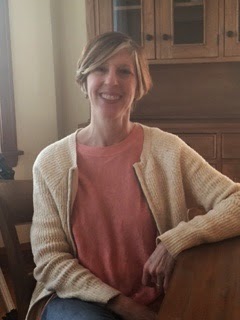
















 Lerner Publishing Group’s Carolrhoda Books occasionally accepts unagented submissions. According to editorial director Andrew Karre, the publisher will take young-adult manuscripts from October 1st until October 31st.
Lerner Publishing Group’s Carolrhoda Books occasionally accepts unagented submissions. According to editorial director Andrew Karre, the publisher will take young-adult manuscripts from October 1st until October 31st.


















I’m starting a campaign: Zunon for 2017 Caldecott.
I also loved Elizabeth’s art for One Plastic Bag by Miranda Paul.
This was definitely an intriguing picture book, with a pleasing repetitive structure always beginning with Great Grandmother Nell is … I also loved the circular structure to the story. It begins with her being scary, and ends with her still being scary and yet we’ve grown, as the narrator has to appreciate her prickliness and spunk as we see their developing bond through the sensory details that are presented.
My grandmother’s dressing table, with its powder puffs and perfumes and little pots of rouge, and her dresser with photos of people wearing enigmatic smiles! This brings it all back (tho I wasn’t afraid of my Grandma, only of her creepy fox marten stole).